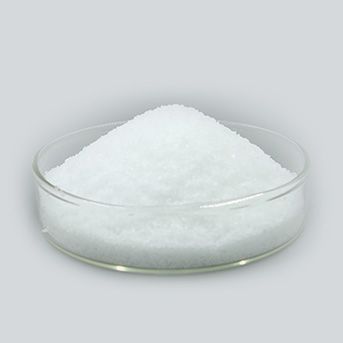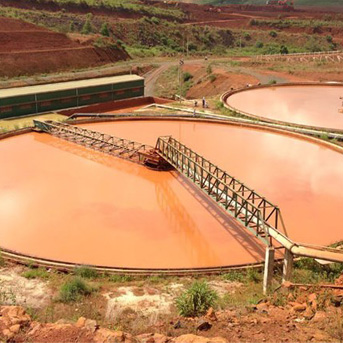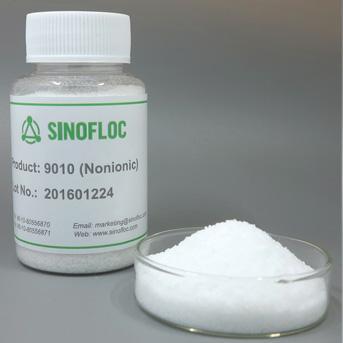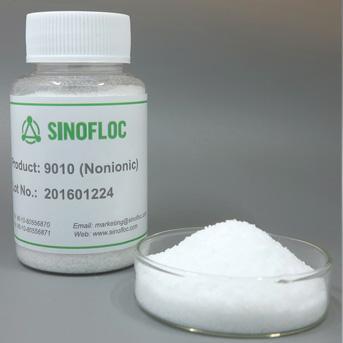Amphoteric Flocculants
SINOFLOC amphoteric flocculants are partially hydrolyzed polyacrylamide with high molecular weight. This amphoteric polyacrylamideis easily to remove both the positive and negative charged contents particles in a suspension solution.
Amphoteric Polyacrylamide (pam powder) Specifications
|
Products |
Product Code |
Cationic Charge |
Anionic Charge |
Molecular Weight |
|
Amphoteric PAM Powder |
SINOFLOC 502 |
Low |
Medium |
High |
Amphoteric polyacrylamide also called zwitterionic polyacrylamide or dipolar ionic polyacrylamide. The molecular chain of the amphoteric flocculant has two or more functional groups, of which have at least one anionic charge and one cationic charge. Unlike other mono-ionic polyacrylamides that only form either a cationic or anionic charges, the amphoteric polyacrylamide simultaneously have both ionic states.
Amphoteric polyacrylamide is copolymerized by acrylic cationic monomer and acrylamide monomer. The anionic charge forms after the hydratization of the acrylamide monomer, and the cationic charge forms from the acrylic monomer. Thus, the amphoteric polyacrylamide has both positive and negative charges on its molecular chain.
Main applications of Amphoteric Flocculants
SINOFLOC amphoteric flocculants could be used for municipal wastewater treatment and industrial wastewater treatment. Our products have both anionic and cationic charges on the same macromolecule and could be used to remove both positively and negatively charged contaminant in suspensions.
Amphoteric polyacrylamide has been widely used for industrial water treatment, oil refinery plants and mining etc. Amphoteric polyacrylamide has a better performance and efficiency than the mono-ionic polyacrylamide, especially when the water condition is complicated, or the water condition is keep changing, because its ability to decrease the surface tension of the water is way better. And the performance is stable when the water condition changes.
In some special cases, it usually needs to use anionic flocculants and the cationic flocculants synchronously to reach a better effect of the clarification, however, these added anionic flocculants and the cationic flocculants could react with each other and form precipitation and then lead a poor flocculate result. The amphoteric flocculants could easily avoid the problem due to its zwitterionic nature. It could create both charges without casing precipitation. And it’s even easier to operate during the treatment, time saving and labor saving.
As the municipal waste water also has more and more complicated composition, the sludge dewatering requires a higher performance agent. At this circumstance, the simply cationic flocculants is not suitable any more, instead many tests and feedbacks show the amphoteric agent works very well.
The newly developed application is for the oilfield, facts prove that amphoteric polyacrylamide could be used for profile control, water plugging, friction reduction and also the treatment for the fluid.
Packaging - Storage
In 25 kg Kraft bags or PE valve bags or 750 kg big bags. The product should be kept dry place and the storage temperature is 0oC to 35oC, away from direct sunlight and moisture.
Products Feeding
The solutions of SINOFLOC amphoteric polymer must be prepared in suitable plants equipped with dry powders feeding and dispersion units and with continuous and moderate agitation. The dissolution water must have a temperature included between 10°C and 40°C; For a correct use of SINOFLOC amphoteric polyelectrolyte and in order to achieve the best possible results, it is necessary to allow a “maturation” time of 60 minutes. When treating turbid water, the flocculants solution must be added to the water in a point of average turbulence, in order to achieve a thorough and homogeneous mixing without impairing the flock formation. Recommend operating concentration is 3g/l, and the maximum operating concentration is 15g/l. For an optimum performance on specific applications on amphoteric flocculants, please consult with SINOFLOC team.
FAQ
What is the Charge Range of Sinofloc Amphoteric Polyacrylamide?
Sinofloc is supplying amphoteric powder flocculants with cationic charge of 5-10% and anionic charge of 20-30%.
What is the Main Characteristics of Sinofloc Amphoteric Polymer?
What's the Relationship between Amphoteric Polyacrylamide and Cationic/Anionic Polyacrylamide?
What are Dissolving Tips for Sinofloc Amphoteric Flocculants?
What's the Main Application for Amphoteric Flocculants?
Can Amphoteric Polyacrylamide Be Used in Paper Industry?
What's the Flocculation Principle?
What's the Amphoteric Flocculants Application Feature for Sludge Dewatering?
Could Sinofloc Amphoteric Flocculants Be Used as Water Plugging Agent?
How to Storage Amphoteric Polyacrylamide Well?
How is Sinofloc Service Team?
Shipping
Instructions
Flocculation Precipitation
Flocculation precipitation is the process of flocculation and precipitation of particles in water. When feeding flocculants or coagulant in water, the colloidal and dispersed particles of suspended particles forms flocs under the interaction of molecular force, and they collide and flocculate in the process of sedimentation. The volume and quality of sedimentation increase and sink speed increases. The removal rate of suspended matter depends not only on the velocity of precipitation, but also on the depth of precipitation.
Chemical Feeding
Gravity feeding is to use the gravity to add the agent to the water suction pipe of the water pump or the water absorption well, and use the impeller of the pump to mix. Pressure feeding is to use water pump or water jet to put the chemicals into the original water pipe, which is suitable for putting the chemicals into the pressure water pipe, or we need to add them to the water purification structures with higher elevation and distance. Pump feeding is to use pump is to raise the liquid to the pressure tube in the solution pool. It has a direct use of the metering pump and the use of acid resistance to enhance the effect.
If you want to know more applications of oilfield chemicals, please contact us.
Send product request
Other supplier products
| Red Mud Settling Flocculants | SINOFLOCred mud setting flocculants is used for settling aluminum red mud slurries in alumina plants, which provide high settling rates, better sep... | |
| Friction Reducer | SINOFLOC is committed to being customer's most reliable supplier who could provide an extensive range of oilfield chemicalsand services, with high-... | |
| Superabsorbent for Agriculture | SINOFLOC is committed to being customer's most reliable supplier who could provide an extensive range of oilfield chemicalsand services, with high-... | |
| Cationic Polyacrylamide PAM Product Outstanding Properties Areas | Polyacrylamide products are mainly divided into anionic, cationic, and nonionic models. The properties of each different model of polyacrylamide ar... | |
| Nonionic Flocculants | SINOFLOC nonionic flocculantistechnically pure polyacrylamides. Nonionic polyacrylamide exhibits neutral nonionic properties in the aqueous solutio... |
Same products
| MOBILUX EP 0 16KG Lithium Complex Grease | Seller: Guangdong Juguangheng Automation Equipment Co.,Ltd. | These lithium hydroxystearate greases are formulated to provide extra protection against wear, ru... | |
| Nisin Direct supply | Seller: Hebei Shengxue Dacheng Pharmaceutical Co., Ltd. | Nisin, a natural antimicrobial peptide, has various applications in the food industry due to its ... | |
| Large supply Nisin | Seller: Hebei Shengxue Dacheng Pharmaceutical Co., Ltd. | Nisin is considered a natural preservative because it is derived from the fermentation of bacteri... | |
| Nisin Wholesale Price | Seller: Hebei Shengxue Dacheng Pharmaceutical Co., Ltd. | Nisin is a natural antimicrobial peptide produced by certain strains of the bacterium Lactococcus... | |
| Nisin Quality Manufacturer | Seller: Hebei Shengxue Dacheng Pharmaceutical Co., Ltd. | In some cases, the addition of nisin allows dairy products to be preserved without the need for e... |





















